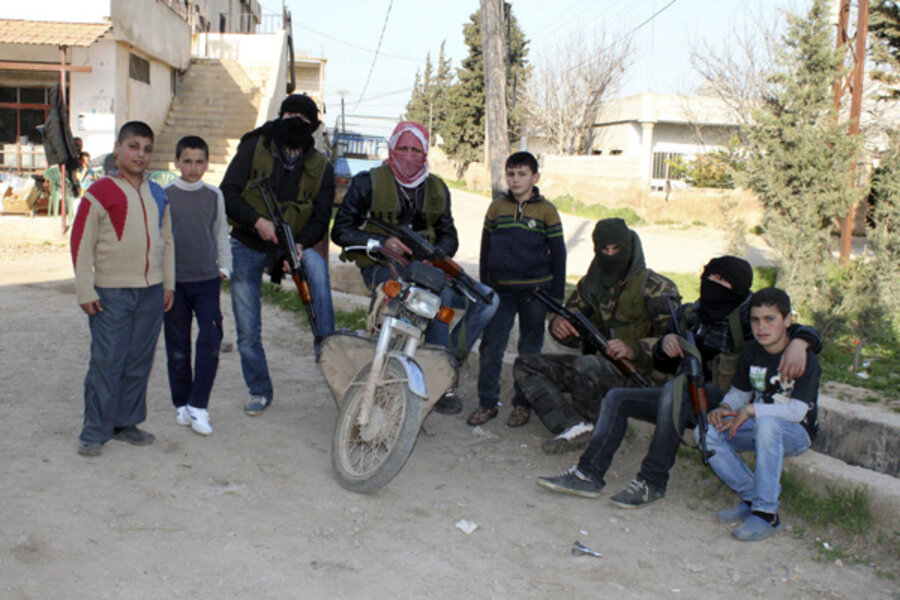Syria's children: even their first words are now shaped by war
Loading...
When Sham, born during Syria’s civil war, uttered her first word recently, it conveyed a great deal about how devastated her country is.
“Enfijar,” the toddler said. Explosion.
“That’s why we left, that’s why we ran,” said Sham’s mother Hamma in an interview with international aid group Save the Children. “My daughter’s first word is 'explosion.' It is a tragedy. We felt constantly as if we were about to die.”
Sham (whose name was changed by researchers) is one of nearly 2 million children who have become “forgotten victims” of Syria’s brutal civil war, according to reports released this week by the United Nations Children’s Fund (UNICEF) and Save the Children.
Though accurate statistics are notoriously difficult to come by in war zones, the two reports together chart a slow march toward crises in education, health, and violence – both conflict-related and sexual – against Syrian children since the conflict began two years ago.
"People realize this is an emergency, but they may not realize how many children it involves," says Carolyn Miles, Save the Children's CEO and president. "It's truly a childhood emergency."
Some of the ways children have been affected by Syria’s war are expected. According the Syrian Observatory for Human Rights, 3,700 children have died in the conflict and 500,000 have been made refugees. Three quarters of the children interviewed in a recent Turkish study cited by Save the Children reported that they had lost a "loved one" because of the fighting.
But even beyond the frontlines, almost no facet of childhood has been spared by the conflict.
Before fighting began, about 90 percent of Syrian children attended primary school – one of the highest rates in the Middle East. But in the past two years, some 200,000 of them have been forced out of school.
Two thousand school buildings have been damaged by fighting, and 1 in 5 schools across the country is now out of commission, because of damage or because it is serving as a makeshift shelter for some of the country’s 2 million internally displaced people.
As the education system has decayed, so has healthcare. More than half of Syria’s hospitals have been damaged in the fighting and one third are completely out of commission. Children, particularly in the epicenters of conflict, are far from the reach of routine medical care. Only one third of children in northern Syria have been vaccinated and many areas are teetering on the edge of a serious disease outbreak, Save the Children reports.
Other dangers are more difficult to quantify.
Save the Children cites “some evidence” of sexual assault against children being used as a weapon of war and says the number of child marriages seems to be on the rise – perhaps in part because a married daughter is one less mouth to feed, or because she may face less risk of sexual abuse under the protection of a husband.
And an unknown number of children have been recruited to fight on both sides of the conflict, and children as young as 8 have been deployed as human shields.
UNICEF noted that aid groups have made some inroads in delivering basic services to Syria’s children – including re-enrolling 75,000 in school – but that the overall situation remains harrowing.
One child interviewed for the Save the Children report, 8-year-old Noor, summed up his experience: “What do I remember of Syria? Blood. This is it.”








